Taiwanese Cuisine
Taiwanese cuisine is primarily influenced by early immigrants from Fujian, China. Over time, immigrants from elsewhere in China brought Cantonese, Wu, and Sichuanese influences, among others.
Under Japanese control, Taiwan felt Japanese influences. Taiwan was influenced by the nearby Ryukyu Islands, which have similar cuisine in some ways. Retro Taiwanese cuisine, referred to as old-time flavor(古早味 koo-tsa bi), often has Japanese and Western characteristics.
Braising(滷) is a widely used technique to prepare dishes. Braising liquid(滷汁) is used to cook all kinds of vegetables, meats, mushrooms, et cetera. Typically a pouch of spices(滷包) is used to flavor the braising liquid. Steaming(蒸) is also popular. Dishes are steamed in bamboo steamer baskets, sometimes in cups or small bowls. Oo peh(烏白 / 黑白切) refers to dishes served cold.
Pickling is also important in Taiwanese cuisine. Vegetables like cabbage, mustard, and daikon are preserved through various methods of pickling.
An uncommon cooking method particular to Taiwanese cuisine is cooking in a rock stove called khong io(炕窯). Rocks are piled in a dome shape and then heated with fire from inside. Food such as sweet potato is thrown in, then the hot rocks are collapsed and buried. Once the food is cooked, it is unburied and enjoyed.
Bento boxes, called png pao(飯包)[便當], are a common meal and favorite of travelers. There are several set styles, all with a base format of rice with vegetables and meat.
Ingredients
Rice(大米) is very important in Taiwanese cuisine. Due to Japanese influence, short-grain rice varieties have become the norm for steaming. Long- and short-grain sticky rice are used to make rice balls and cakes. A wide variety of rice cakes are part of Taiwanese cuisine ranging from savory uann-kue(碗粿) and bah-uan(肉圓) to sweet mochi. Rice vinegar and rice wine(料酒) are produced from rice.
Soybean(黃豆) is commonly processed to make soy sauce(醬油). Sometimes wheat, sticky rice, or other grains are also added. Taiwan also has light soy sauce(白醬油), which has extra delicate flavor suitable for soups and light dishes. Black soybean is used to make black soybean soy sauce(黑豆醬油). Thick soy sauce(醬油膏) is also made by heating soy sauce with starch or thickener.
Soy milk(豆奶)[豆漿], tofu(豆腐), and tofu pudding(豆花) are made from soybeans.
Pepper(胡椒) is a common spice. White pepper(白胡椒) is made from ripe peppercorns and tends to have more uses in Taiwanese cuisine, while black pepper(黑胡椒) is made from unripe peppercorns. Both are often available in powder form. Pepper probably reached Taiwan via contact with southeast Asia.
daikon(菜頭)[白蘿蔔], cabbage(白菜)
bamboo shoot(筍仔)
luffa, winter melon
Kuzu starch was probably an important ingredient in the past, though tapioca starch and sweet potato starch are common now.
Taro has an ancient history in Taiwan. Smaller varieties are traditionally cultivated by indigenous people. Larger varieties have been developed. Taro from Dajia(大甲) is famous for its good size and taste.
Sweet potato has become popular since it was introduced.
Sugarcane(甘蔗) is widely grown. A dark-skinned variety has an ancient history in Taiwan and southern China. Fresh stalks are pressed for juice or sometimes chewed. A light-skinned variety is more commonly processed. Brown sugar(黑糖) is a traditional product of sugarcane, popularly used for flavoring sweets.
An unusual ingredient called jiaobaisun(茭白筍) is swollen stems of manchurian wild rice, introduced to Taiwan by Japan.
Certain herbal grass(仙草) related to mint is used for grass jelly or herbal jelly(燒仙草).
The seeds of a certain variety of creeping fig(愛玉子) are used to make aiyu(愛玉) jelly
Lychee(荔枝 nai-tsi) and starfruit(楊桃 iunn-to) originated near Taiwan and have long history there. Bajiao(芭蕉 pa-tsio) or japanese banana is cultivated, and wild varieties can even be found in Taiwan.
A type of mango(檨仔 suainn-a)[芒果] called tu mango(土檨仔 tu suainn-a)[土芒果] was first introduced to Taiwan centuries ago. More recently, other types from around the world were adopted, such as Irwin mango[愛文芒果]. Today, many fruits from the Americas can be found thriving in Taiwan, such as guava(林菝仔 na puat-a)[芭樂], pineapple(王梨 ong-lai)[鳳梨], papaya(木瓜 bok-kue), and dragonfruit[火龍果].
In some coastal areas, jelly is made from dried agar(石花菜).
It’s no surprise that seafood is popular around the island of Taiwan. Oyster(蚵仔 o-a)[牡蠣], clam(蛤), shrimp(蝦), crab(螃蟹), small squid(小管仔 sio-kng-a)[小捲] and large squid(魷魚), and cuttlefish(花枝) are commonly used. Popular fish are milkfish(虱目魚 sat-bak-hi), mackerel(鯖魚), seabream(鯛魚), pomfret(鯧 tshiunn), and varieties of spanish mackerel(馬鮫 be-ka) including narrow-barred spanish mackerel(塗魠 thoo-thoh)[土魠魚] and chinese spanish mackerel(疏齒 se-khi).
Pork is the main meat used in Taiwanese cuisine. Pork belly(五花肉 / 三層肉) is a favorite cut. Trotters(豬腳) and pork blood(豬血) are also used. Pork and shrimp are often paired together.
Dishes
- steamed rice(白飯 peh png)
- io-png(油飯): sticky rice with oil and added ingredients like shrimp or minced pork
- tang-a bi-ko(筒仔米糕): seasoned rice tower traditionally steamed in a bamboo cup
- png-uan(飯丸)[飯糰]: sticky rice ball with egg, pickles, fried dough, or other filling, usually served for breakfast
- rice porridge(糜 mue / 稀飯 / 粥): boiled rice porridge, often with seafood or other ingredients added
- mi-soann(麵線): thin rice noodles, often in broth, sometimes with fish, meat, oysters, or other additions
- bah-tsang(肉粽)[粽子]: sticky rice wrapped in bamboo or similar leaf with meat or bean filling
- uann-kue(碗粿): steamed rice cake with meat or other toppings mixed in and sauce for serving
- pickled cucumber(脆瓜 tshe-kue): sweet and sour pickled cucumber
- bah-uan(肉圓): rice cake ball with meat filling and sauce
- peh-tshai-loo(白菜滷): braised napa cabbage
- loo-bah-png(滷肉飯): braised meat over rice
- loo-bi(滷味): braised ingredients, often served a la carte from vendors
- o-a-tsian(蚵仔煎): oyster omelette made with sweet potato starch and served with sauce
- o-te(蚵炱 / 蚵嗲): oyster and vegetable fritter
- bah-kenn(肉羹): thick soup with various meat such as cuttlefish or pork and vegetables; a specific variation is called se-loo-bah(西滷肉)
- sat-bak-hi thng(虱目魚湯): milkfish soup, usually served with soy sauce for dipping
- hi-uan-thng(魚丸湯): fish ball soup, usually garnished with green onion
- kong-uan-thng (貢丸湯): meatball soup, sometimes with daikon added and garnished with coriander or green onion
- stinky tofu(臭豆腐): fermented soy cubes, often fried and served with sweet pickled cabbage
- ti-hue-ko(豬血糕): rice cake with pig blood, sometimes with peanut topping and cilantro
- tau-hua(豆花): tofu pudding, served hot or cold with sweet ginger sauce or other toppings such as peanut
- soy milk(豆奶 tau-ling)[豆漿]
- tang-kue-te(冬瓜茶): winter melon punch sweetened with black sugar
- herbal jelly(燒仙草): refreshing jelly with medicinal properties, often sweetened
- agar jelly(石花凍): refreshing jelly, usually plain or with black sugar
- aiyu jelly(愛玉): refreshing jelly, plain or sweetened and often garnished with lime juice
- tsiong-guan ko(狀元糕): sweet snack made from sticky rice, often with sesame or peanut topping
- lik-tau-pong(綠豆椪): flaky pastry with savory mung bean paste filling
- dan huang su[蛋黃酥]: flaky pastry with salted egg yolk and sweet red bean paste or similar filling
- black tea(紅茶 ang-te)
- bubble milk tea(珍珠奶茶 tsin-tsu ni-te): milk and tea with tapioca pearls added, often with brown sugar or other flavors
Recipes
-
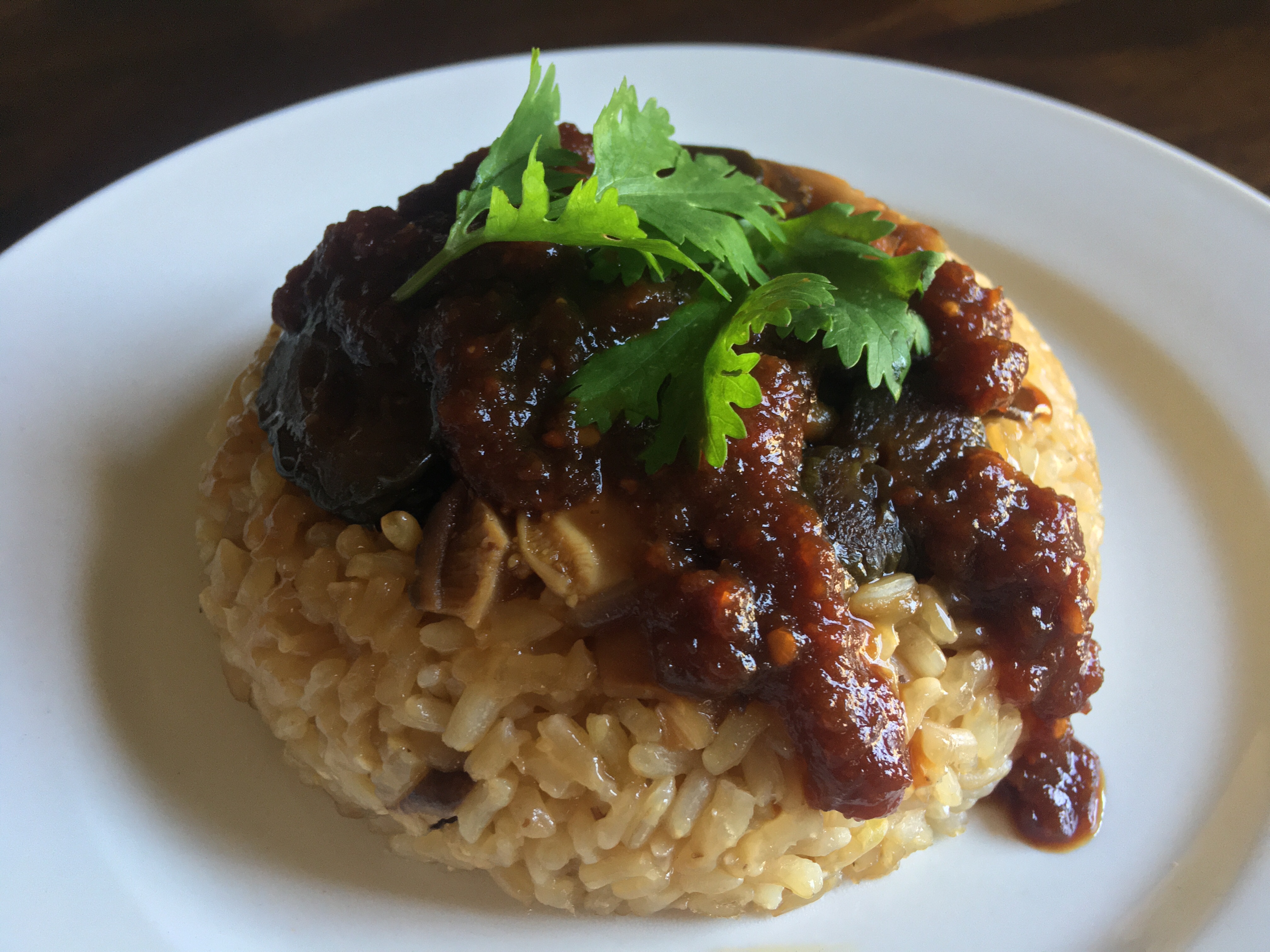
Bi-Ko
Tang-a bi-ko(筒仔米糕), or simply bi-ko(米糕), is a traditional seasoned sticky rice cake shaped by steaming in a bamboo cup(筒仔 tang-a) […]
-
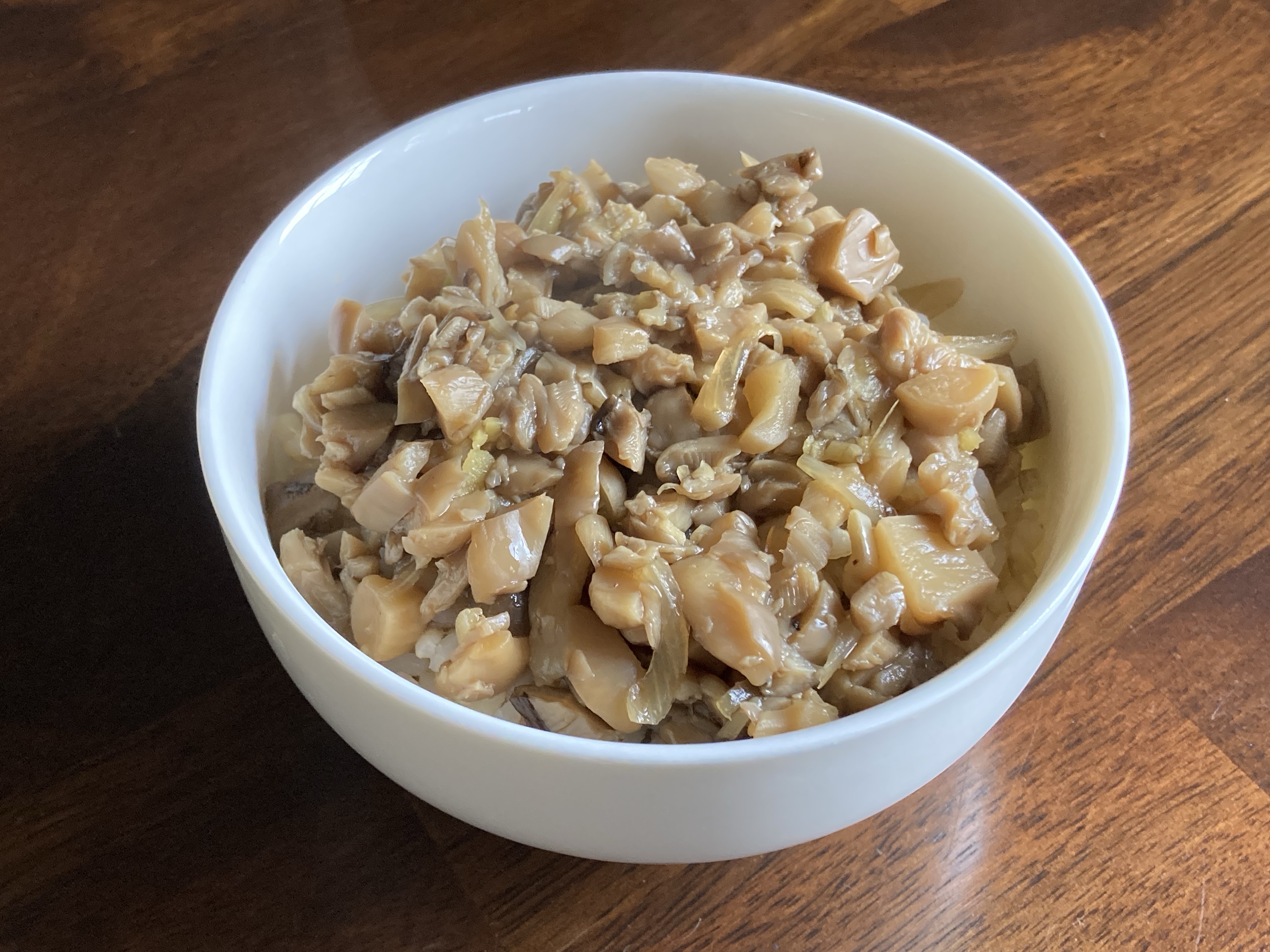
Braised Mushroom Rice
Soo-loo-png(素滷飯) is a vegan version of loo-bah-png(滷肉飯), a popular Taiwanese dish of braised meat on top of steamed rice. Minced […]
-
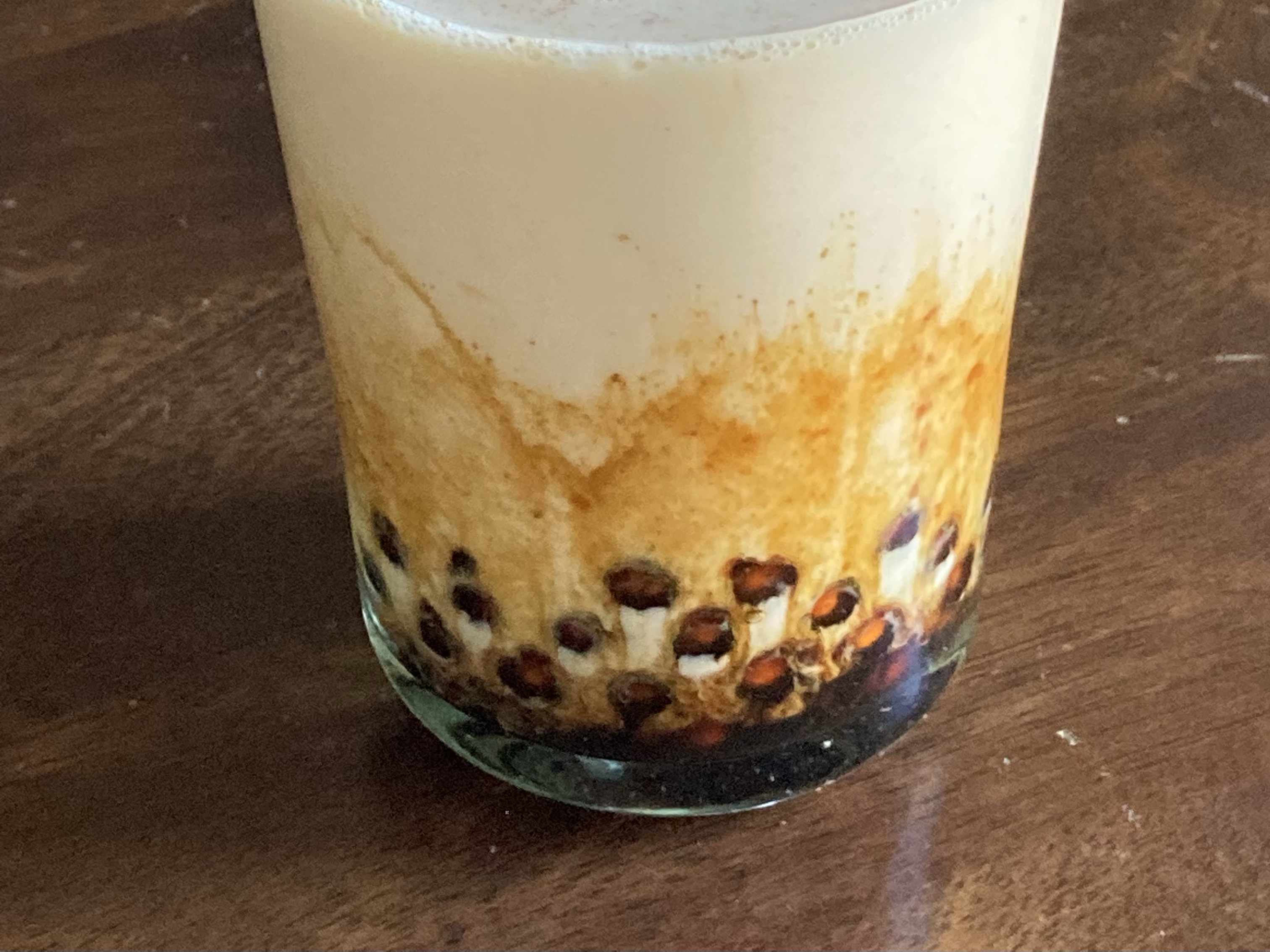
Brown Sugar Boba Soy Milk
Brown sugar boba soy milk(黑糖珍珠豆奶 / 烏糖真珠豆奶 oo thng tsin tsu tau ni) is a variation of the classic boba […]
-
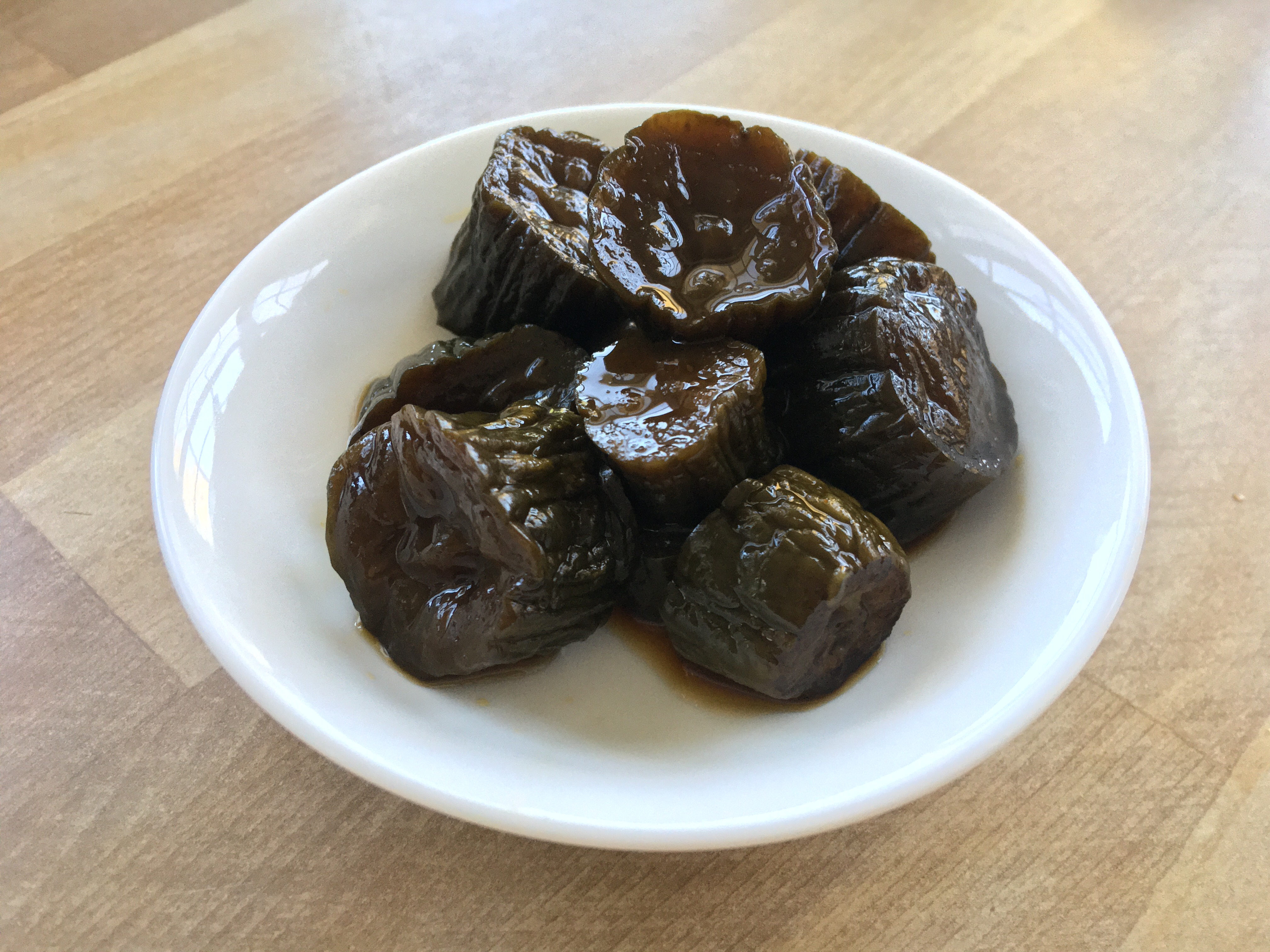
Crisp Pickled Cucumber
Tshe-kue(脆瓜) is sweet pickled cucumber found in Taiwan. It is a side dish or topping, especially for bi-ko(米糕). Tshe-kue is […]
-
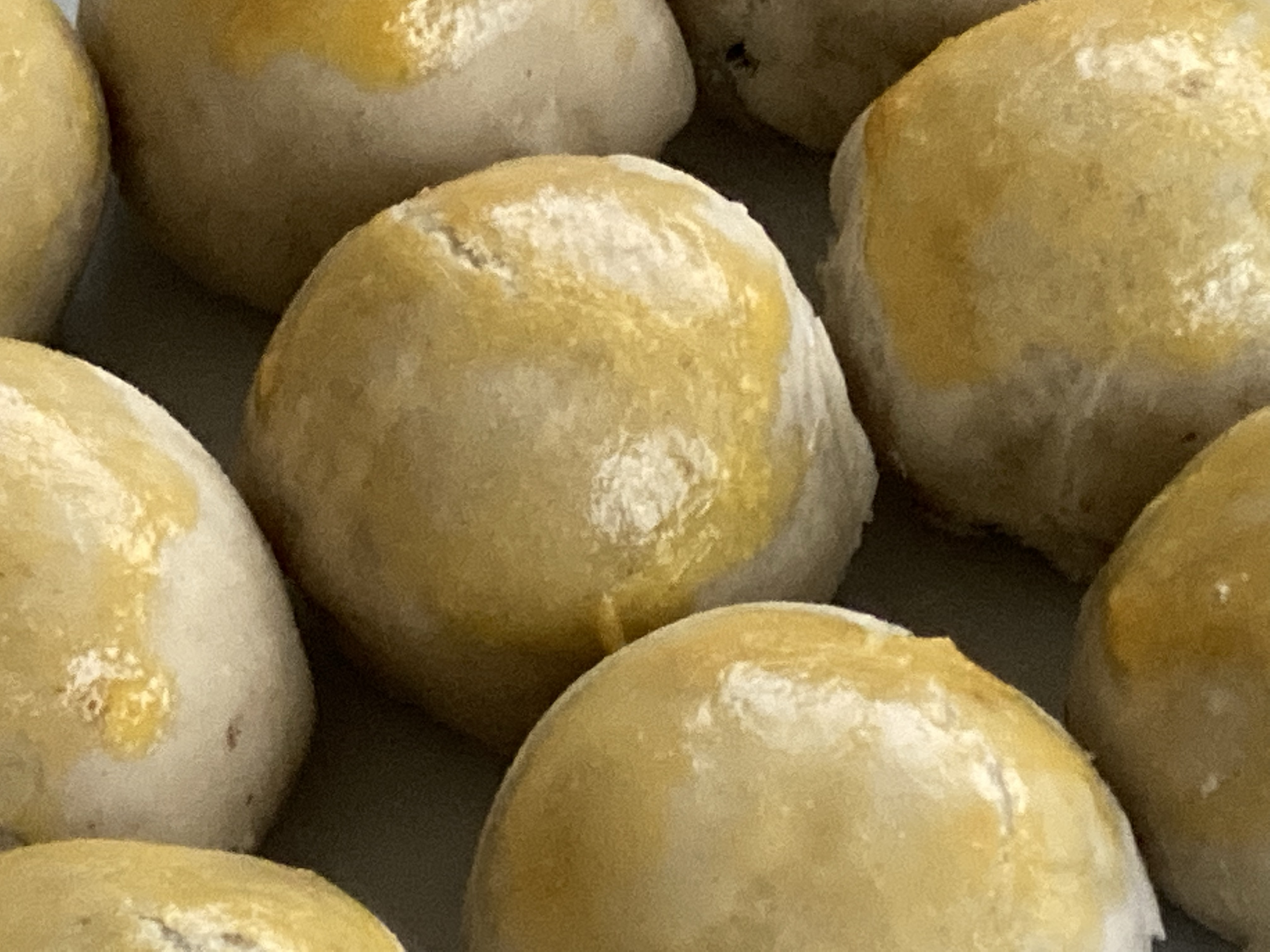
Dan Huang Su
Dan huang su(蛋黃酥) is a Taiwanese egg yolk pastry. It can be considered a type of mooncake. Dan huang su […]
-
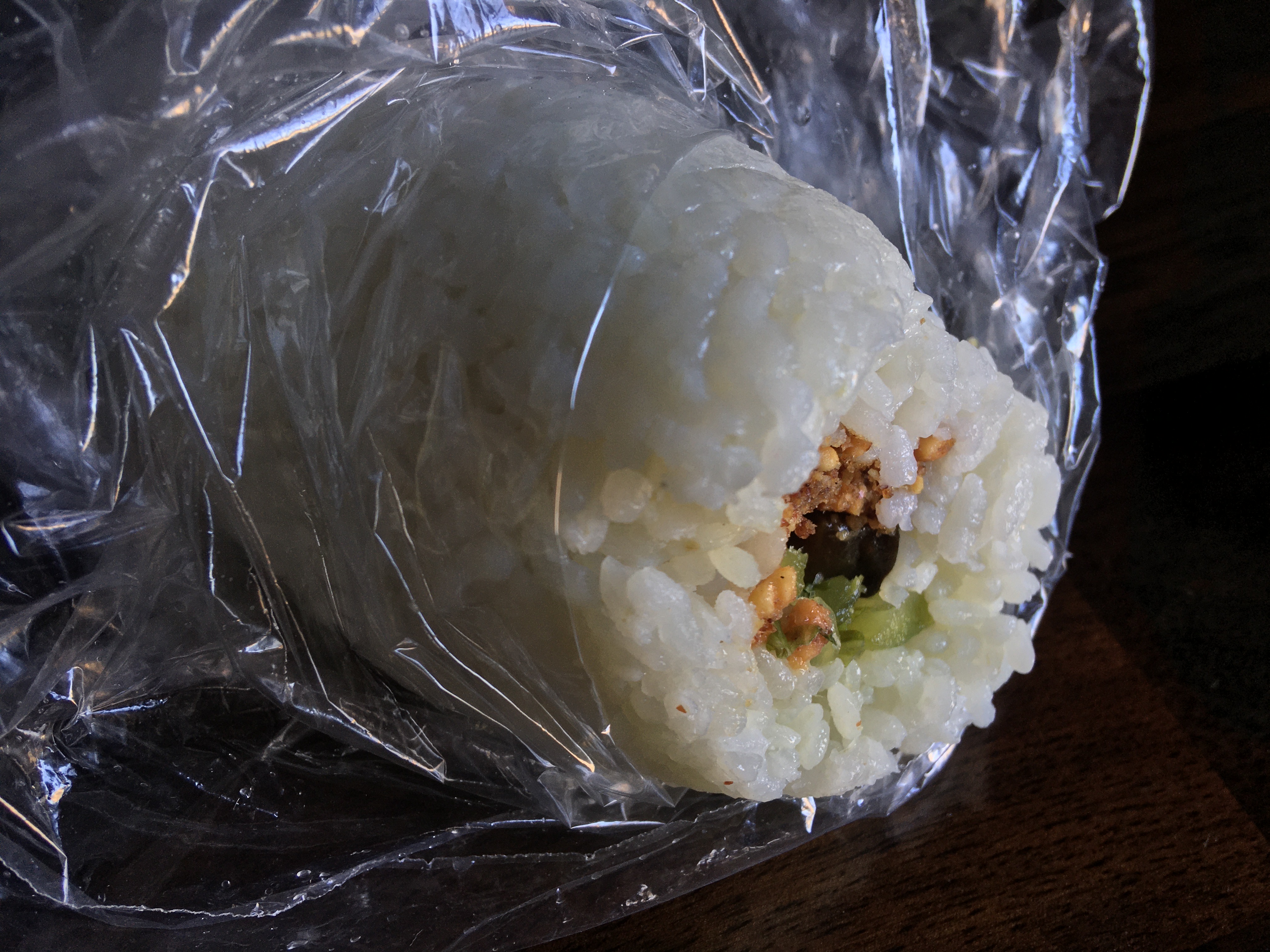
Fan Tuan
Fan tuan(飯糰) is a traditional Taiwanese breakfast rice ball. It is made of sticky rice with salty and sweet filling. […]
-
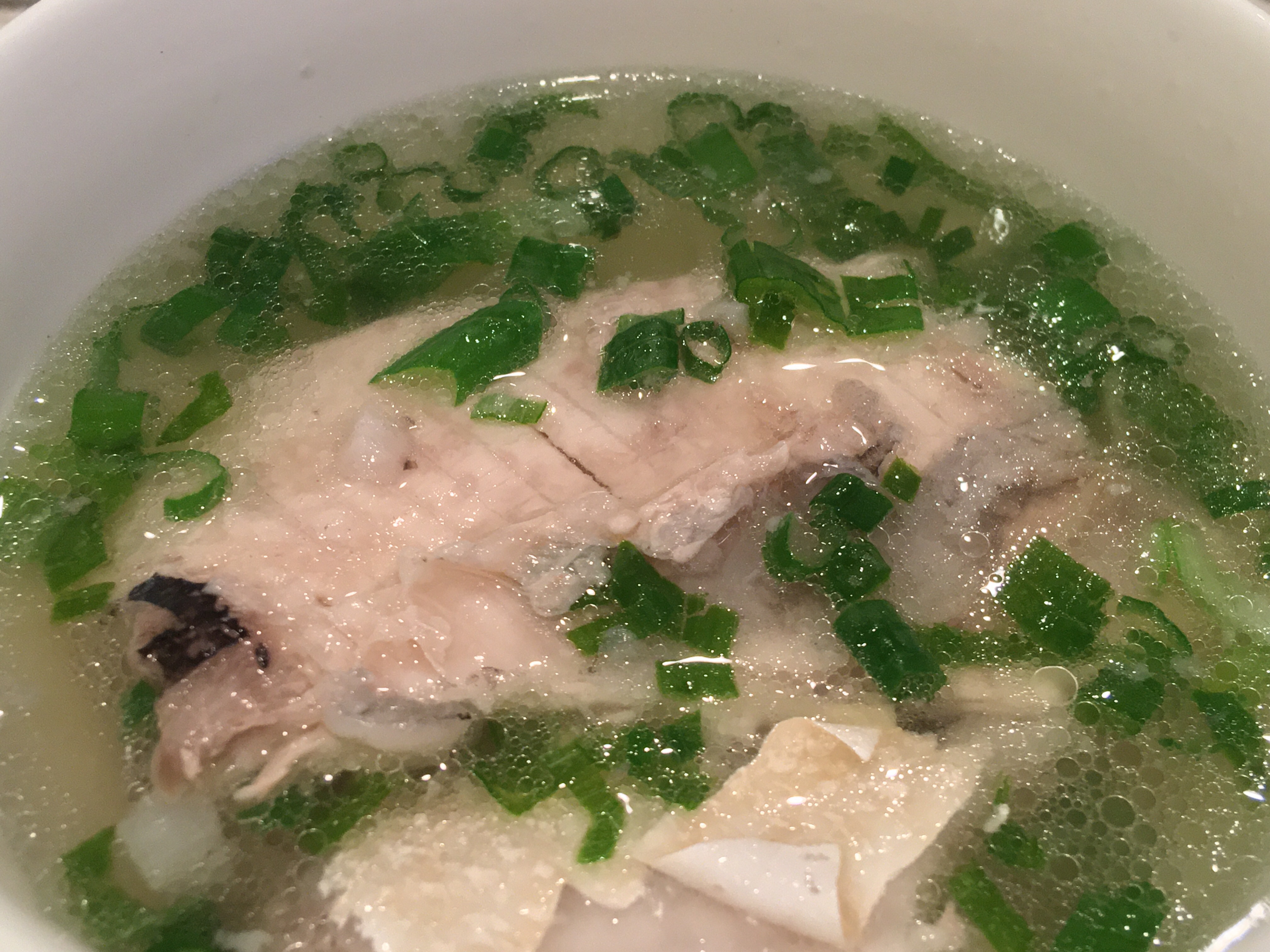
Milkfish Soup
Sat-bak-hi thng(虱目魚湯), or milkfish soup, is a simple, traditional food from Taiwan. Milkfish(sat-bak-hi) is boiled in water and rice wine […]
-
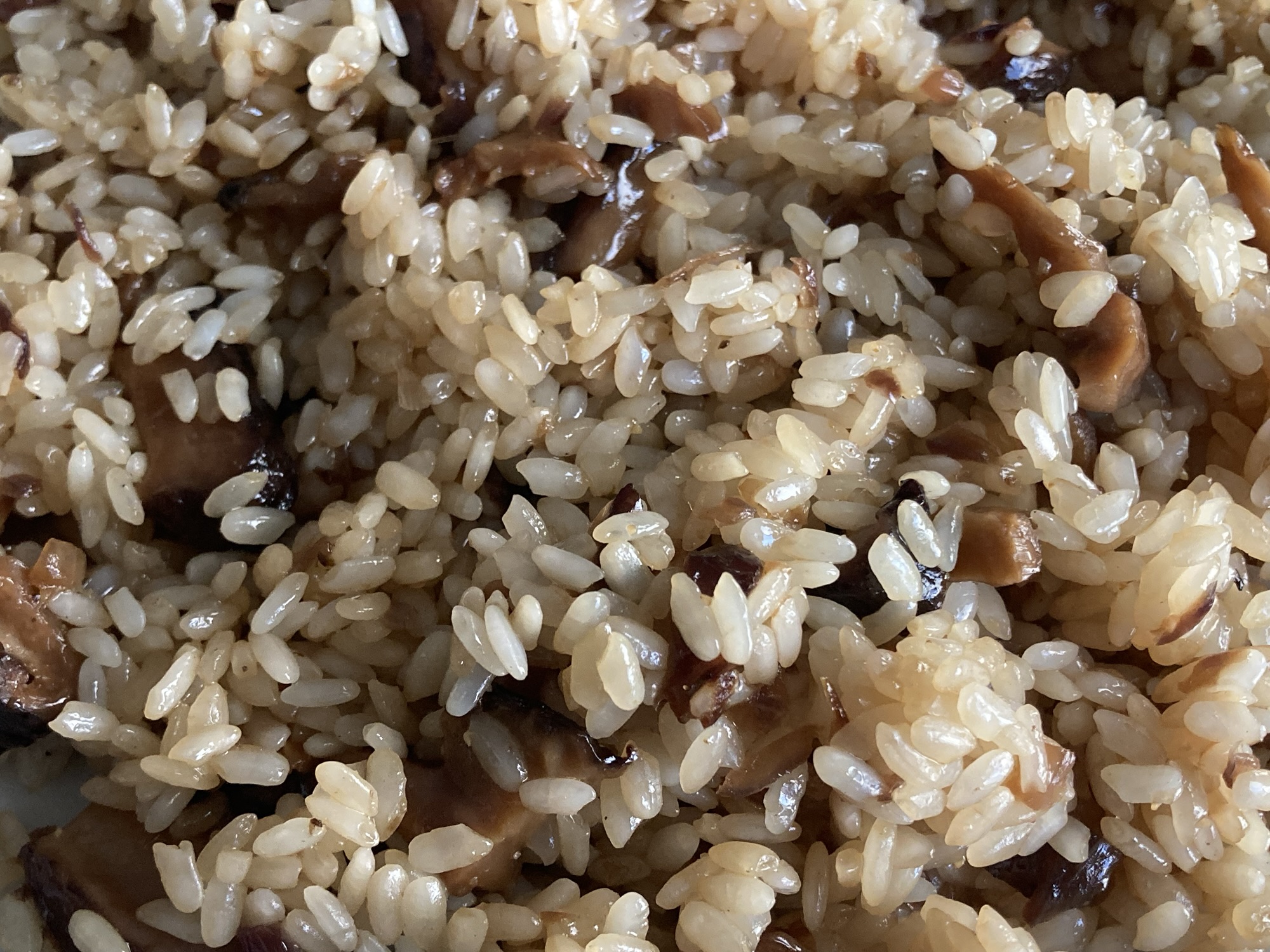
Oil Rice
Oil rice(油飯 io-png) is a simple and traditional old-time(古早味 koo-tsa-bi) Taiwanese dish. It is popularly made for Qixi festival(七娘媽生 tshit-niu-ma-senn […]
-
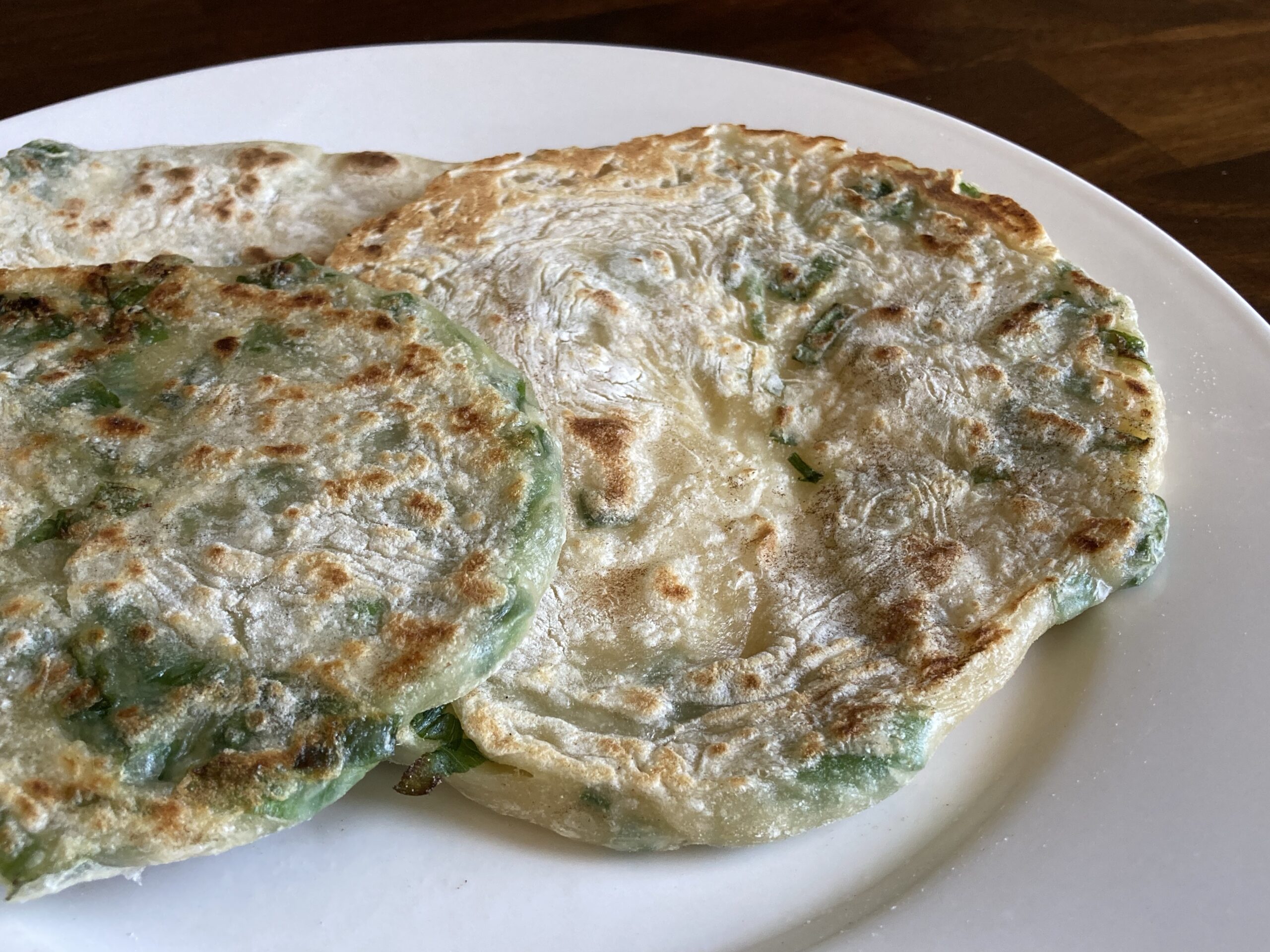
Scallion Pancake
Scallion pancake(蔥抓餅) is a common Taiwanese breakfast food. Although it probably has origins in northern China related to shao bing, […]
-
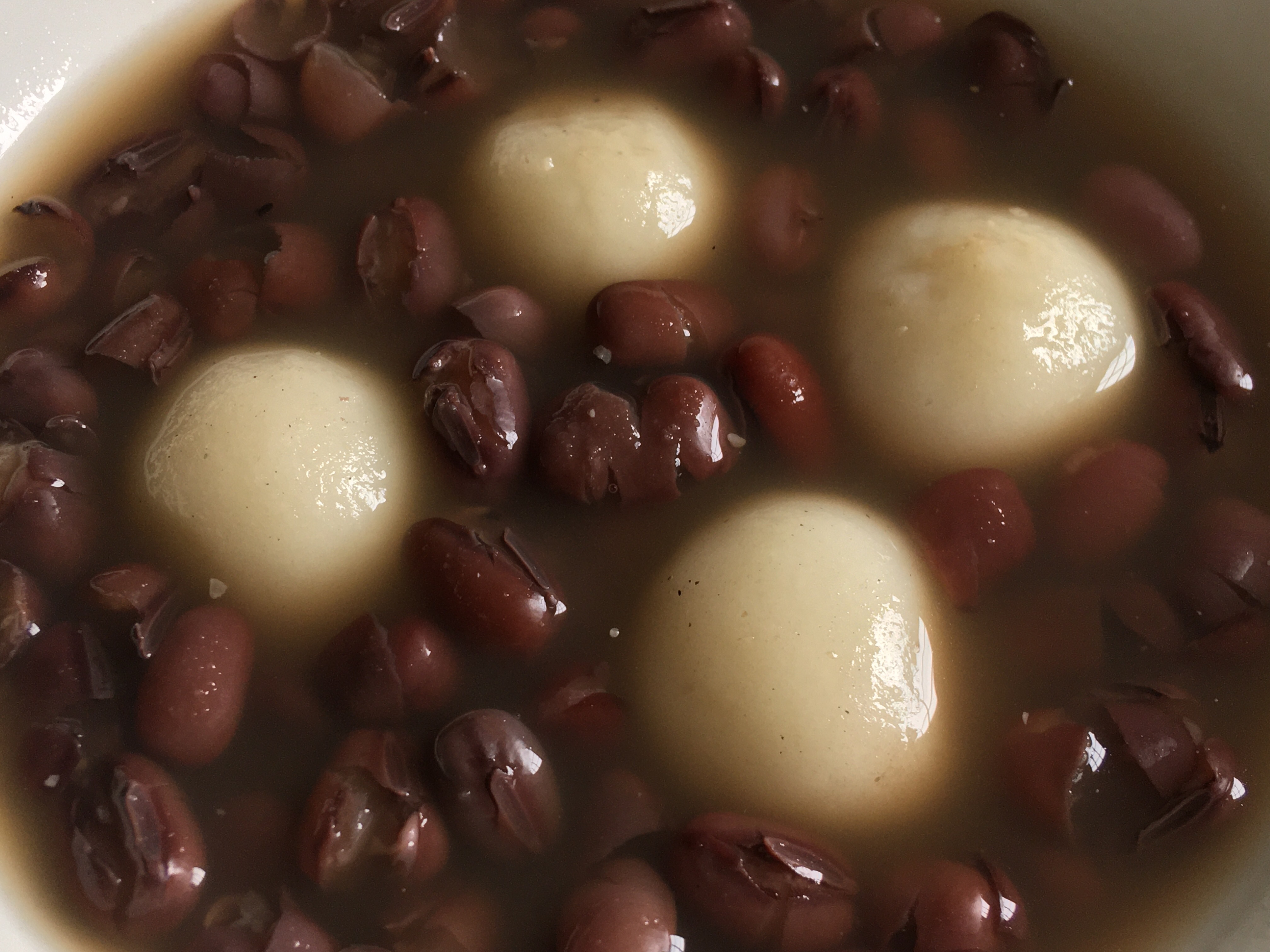
Tangyuan
Tangyuan(湯圓) is boiled rice dumplings, plain or with filling, served in soup. It is a special food served on the […]
-
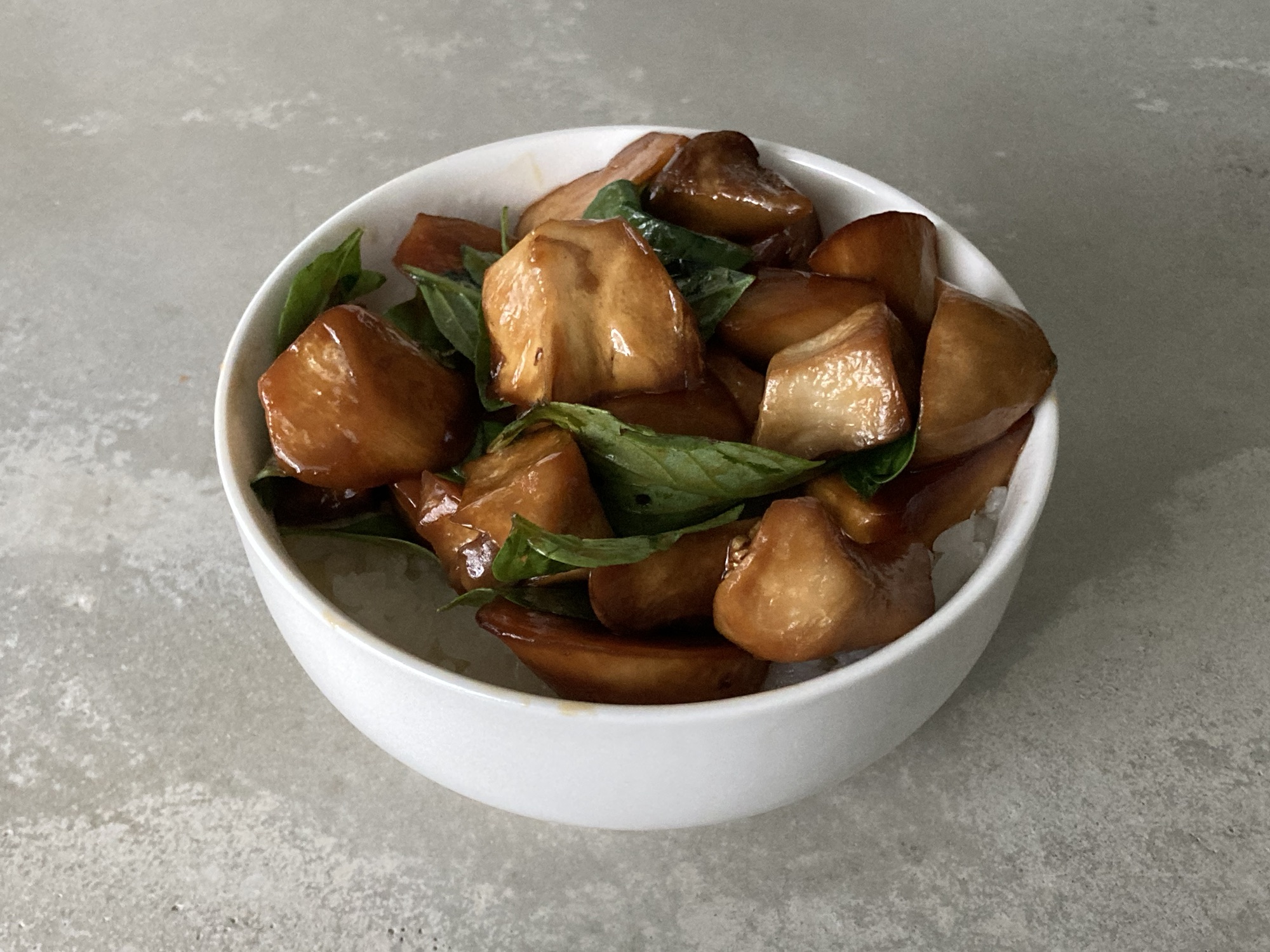
Three Cups Oyster Mushrooms
Three cups oyster mushrooms(三杯杏鮑菇) is based on the popular Taiwanese dish three cups chicken(三杯雞). There are also other common variations, […]
-
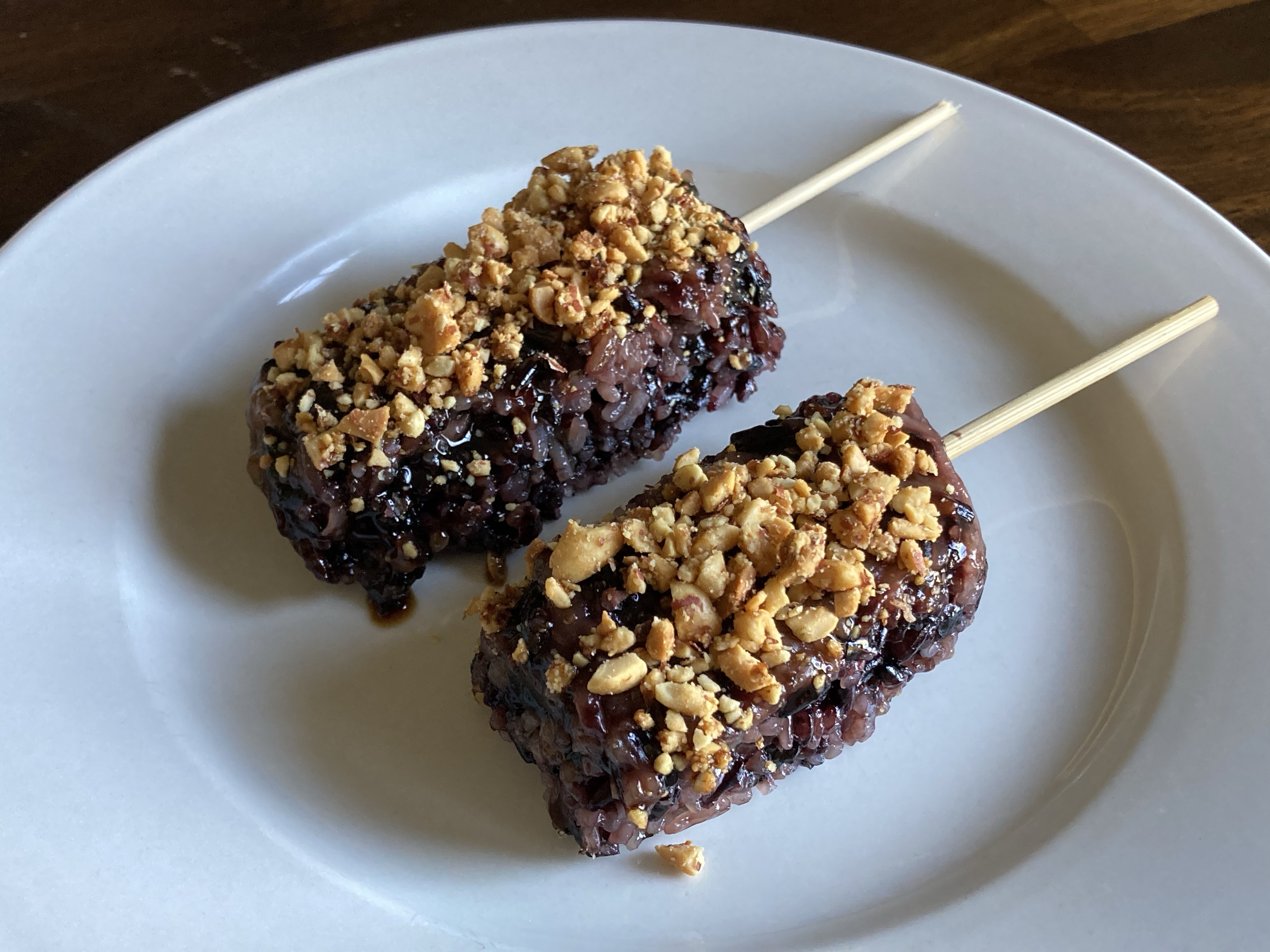
Ti-Hui Kue
Ti-hui kue(智慧粿)[智慧糕], or wisdom rice cake, is a vegan adaptation of pork blood rice cake(豬血粿 ti-hueh-kue)[豬血糕] from Taiwanese cuisine. It […]